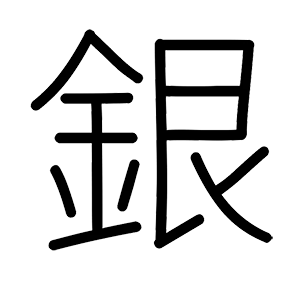An Unbranded Possibly VANCO Crane Engraved Silver Pen c. 1930s
by Jim Mamoulides, September 8, 2023
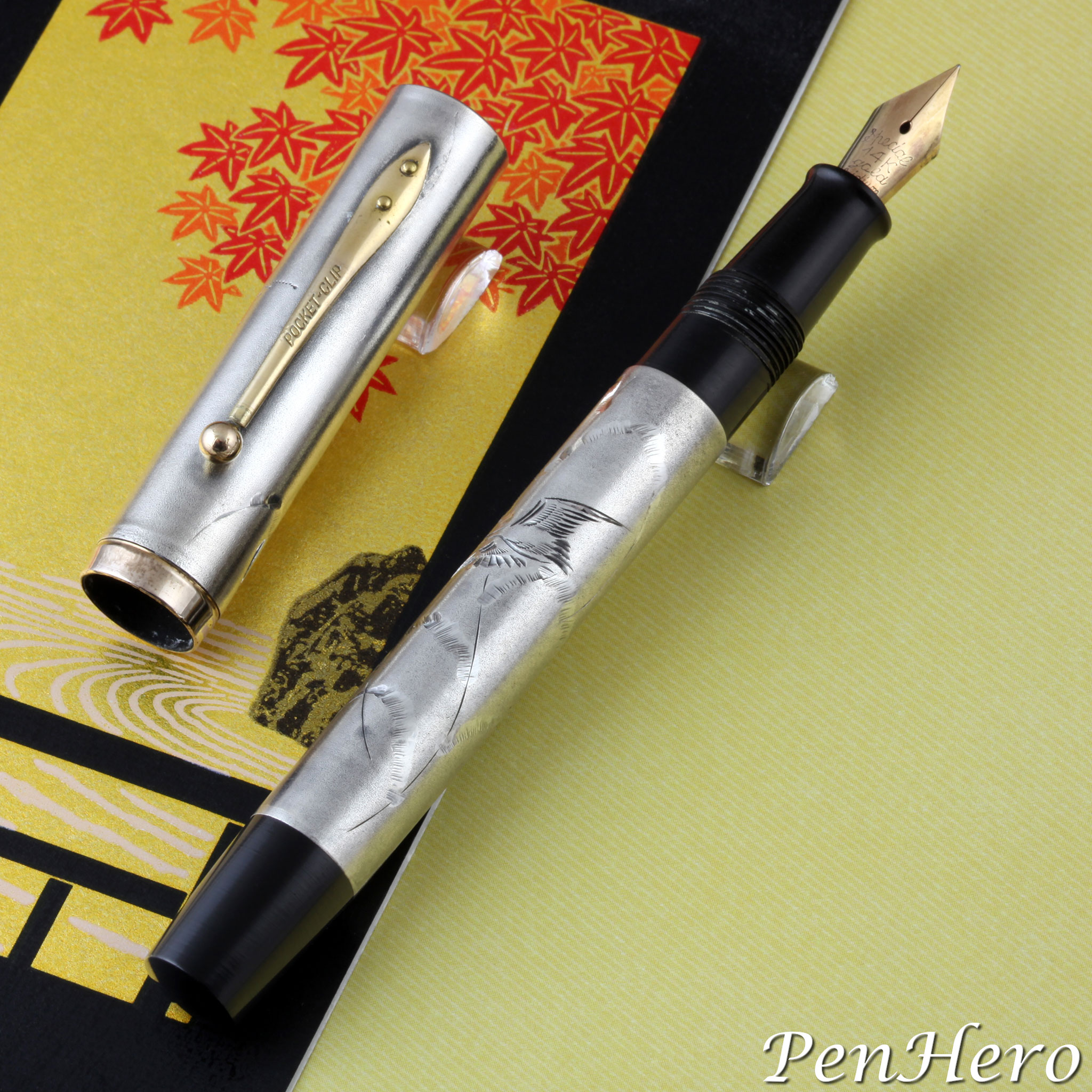 An unbranded Japanese crane engraved silver fountain pen c. 1930s
An unbranded Japanese crane engraved silver fountain pen c. 1930s
Artwork With A Story
This is a c. 1930s sterling silver eye dropper fountain pen with a hand engraved crane (tsuru 鶴) flying over blooming marsh grasses on the cap and barrel. The cap top is stamped (SILVER). The gold plated cap band and clip, stamped POCKET-CLIP, have no hallmark. It’s 5 1/16 inches long and has a gold nib stamped Special over 14K over gold over Iridium. As it does not have a JIS mark, the nib pre-dates 1954.
The engraving, signed by the artist Ikkou, is one continuous scene from the cap down through the barrel. Tall marsh grasses with their long blooms appear mostly on the side of the cap opposite the clip and continue down the barrel with a single crane flying in the middle of the scene on the barrel. The artist’s signature appears at the bottom of the barrel where it meets the hard rubber end cap. The silver is finished with an acid treatment to give it a matte finish.
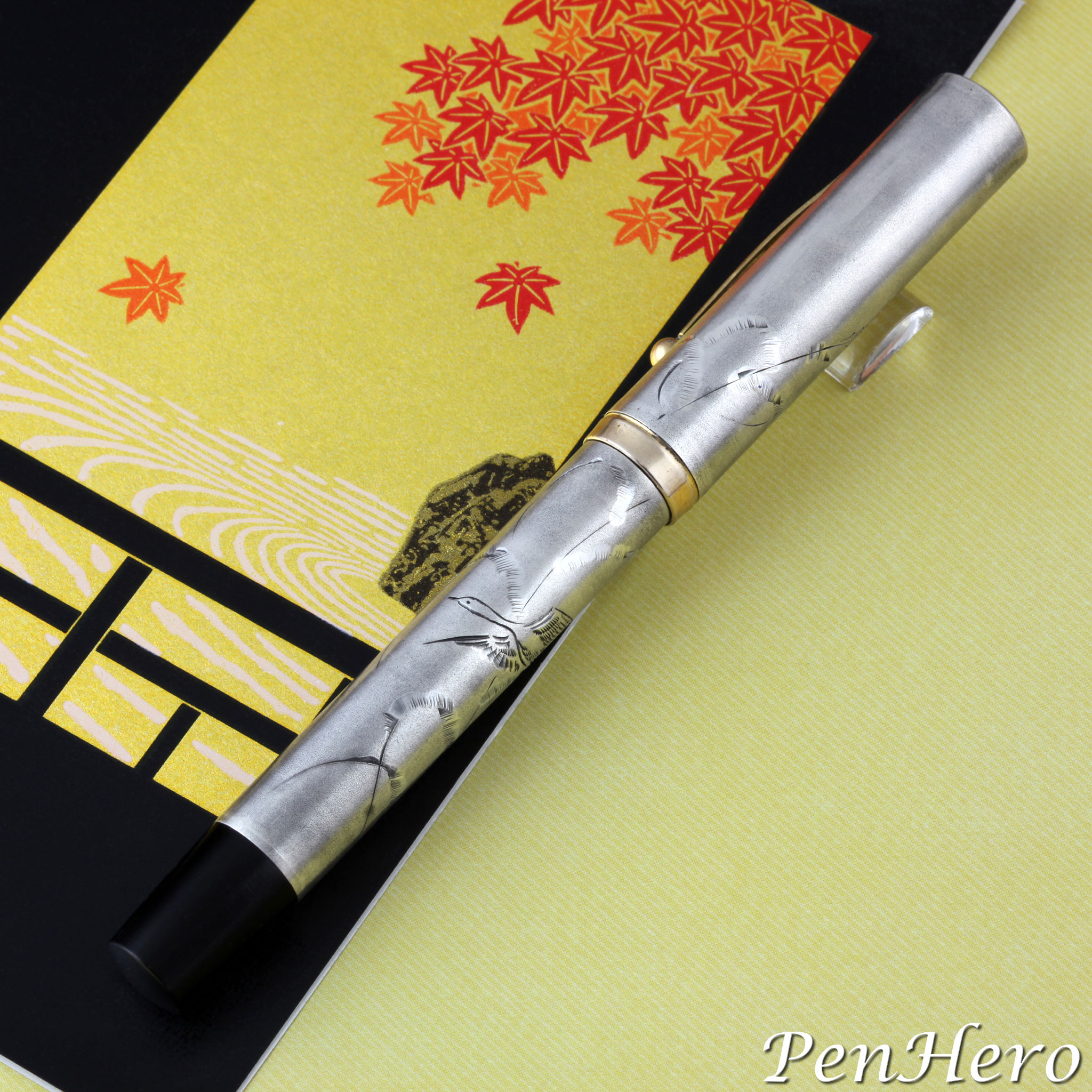 An unbranded Japanese crane engraved silver fountain pen c. 1930s
An unbranded Japanese crane engraved silver fountain pen c. 1930s
The Bird of Happiness
The crane depicted on the pen is probably a red-crowned crane, one of the largest cranes, native to southeastern Russia, northeast China, Mongolia and eastern Japan. The red-crowned crane appears on many Japanese artworks including paintings, scrolls, kimonos, and multi-panel folding screens. They are so named because the top of their head has exposed red skin. The face and neck have black feathers while the rest of the feathers are snow white. They stand nearly five feet tall, have a wingspan of up to eight feet, and can weigh fifteen to twenty-six pounds. They forage in salt and freshwater marshes, where they prefer to nest, as well as wetlands, pasturelands, rice paddies, and fields. Red-crowned cranes in Japan, unlike others elsewhere, are non-migratory.
In Japan the red-crowned crane, which mate for life, is a sign of fidelity in marriage, as well as loyalty. Because of this they can be depicted on wedding garments. They are also long lived, and legend was that they lived for a thousand years, making them a symbol of long life. They are also referred to as the “bird of happiness.”
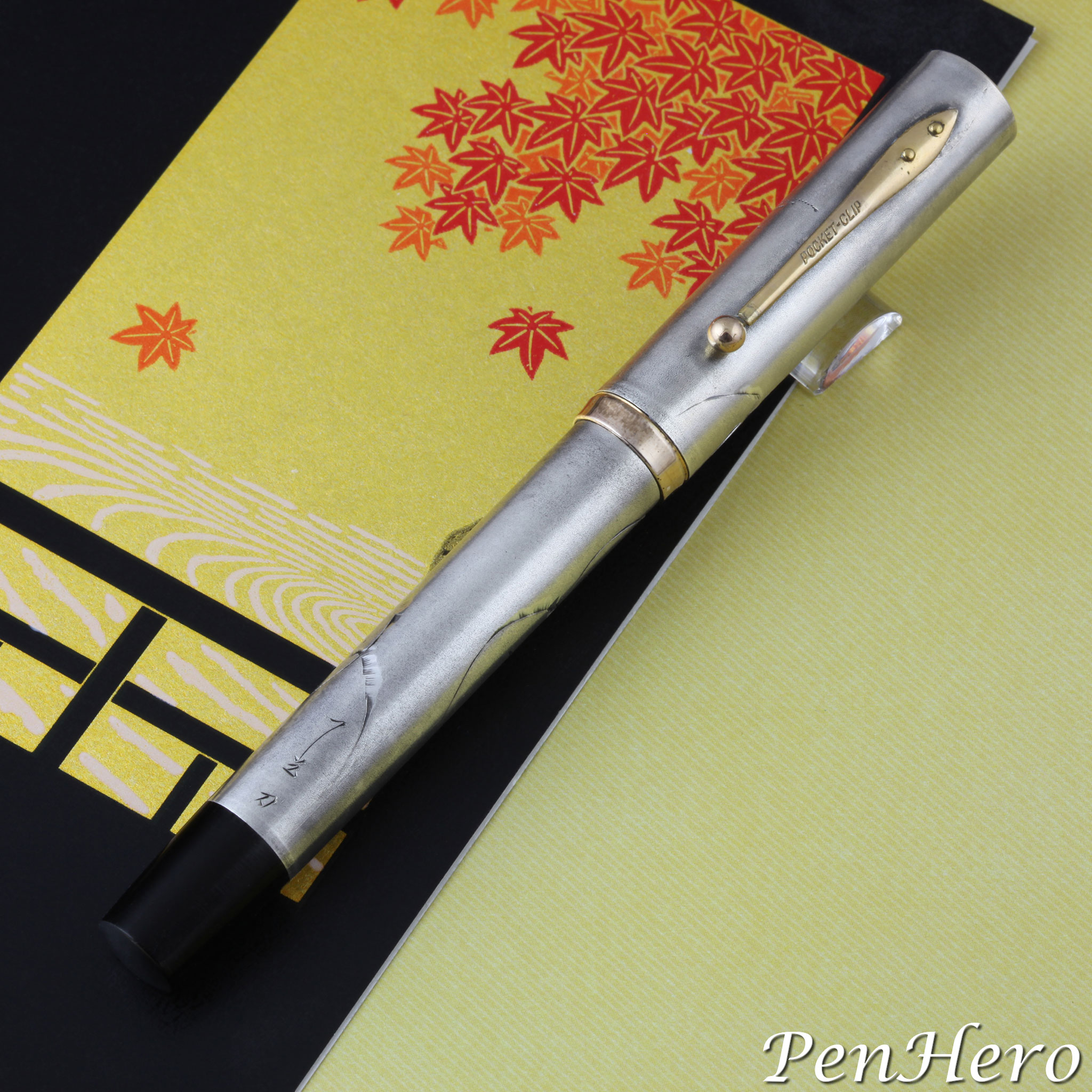 An unbranded Japanese crane engraved silver fountain pen c. 1930s
An unbranded Japanese crane engraved silver fountain pen c. 1930s
1,000 Cranes
The story of Sadako Sasaki illustrates how revered cranes are in Japan. She was two years old when the 15 kiloton atomic bomb Little Boy was dropped on Hiroshima on August 6, 1945 and was close enough to the blast to receive a severe level of radiation. A few years later she was diagnosed with leukemia from radiation exposure, as were many others in that city. A friend encouraged her to fold a thousand origami cranes as there was a legend that doing so would grant a wish and Sadako's wish was she would survive her sickness and live. Her brother Masahiro Sasaki said she folded over 1,300 cranes before she died at the age of twelve. One of her legacies is folding origami cranes has become a gesture of peace.
Her story is the subject of two books. Sadako and the Thousand Paper Cranes by Canadian author Eleanor Coerr, published in 1977, is a short, 80 page, novelized version of her story. Though this book helped make Sadako a world symbol for peace and the effects of nuclear war, it received criticism for telling the story that Sadako failed to complete the 1,000 cranes and was instead helped to her goal by the work of her friends. Sadako’s older brother, Masahiro Sasaki co-wrote The Complete Story of Sadako Sasaki with illustrator Sue DiCicco to update and correct the story in an illustrated 148 page book released in 2020.
Who Made This Pen?
I have photographed three other pens, nearly identical to this one in the design of the cap, barrel and section, each with different engraving, and each with different nibs. One had a VANCO maker's mark on the top of the cap. The others, like this one, had no maker's marks. On three of the pens, including the VANCO one, the engraved artwork is signed by the artist Ikkou and consists of a continuous scene on the cap and barrel.
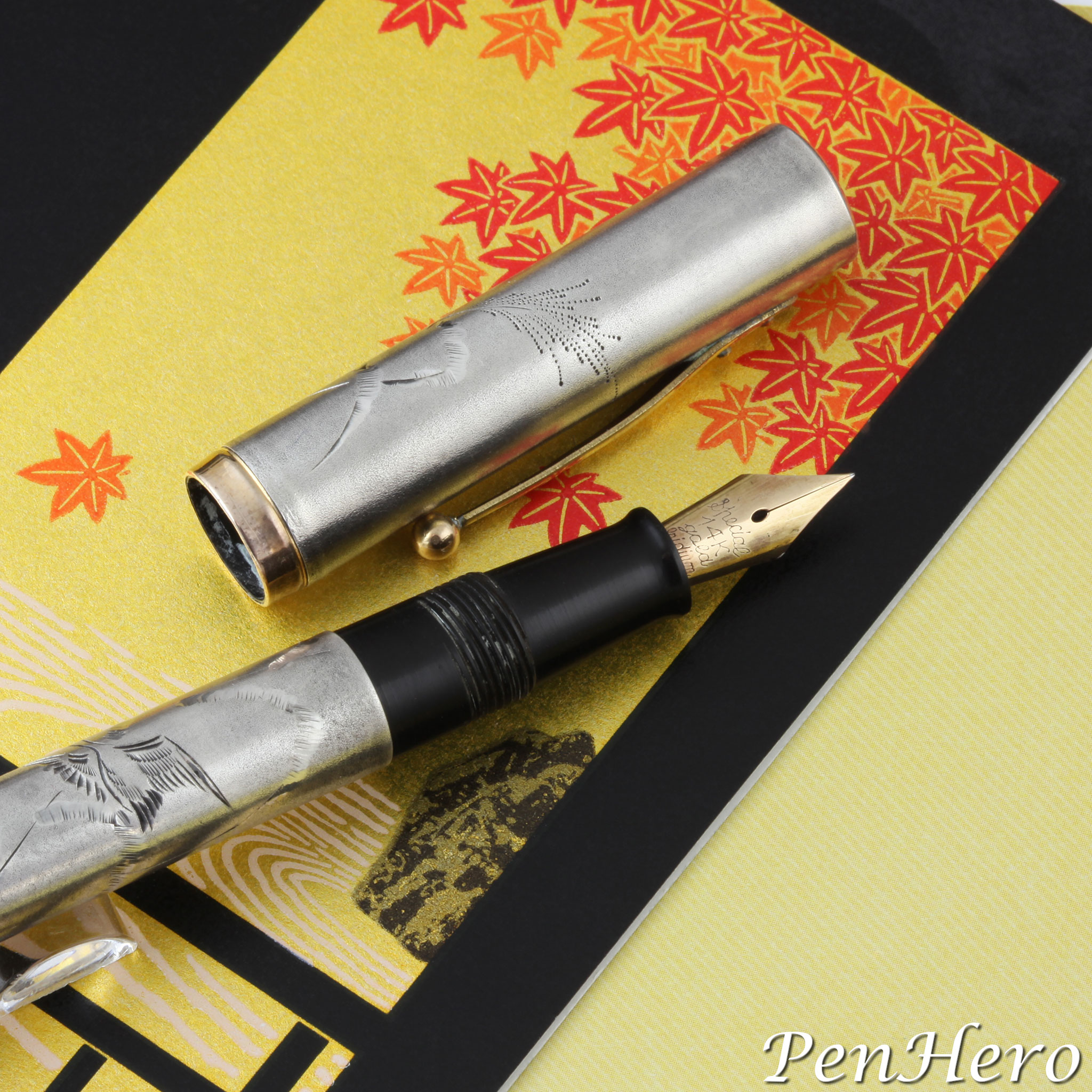 An unbranded Japanese crane engraved silver fountain pen c. 1930s
An unbranded Japanese crane engraved silver fountain pen c. 1930s
VANCO had a relationship with the Shobido Silver Store in Osaka and both were owned by members of the Eto family. It's possible they are all VANCO pens, but it's not absolutely certain as VANCO was very consistent in signing their work with their trademark. It's possible VANCO made them for the Shobido Silver Store, which would explain no VANCO marks. As stated in other articles on these pens, I just don't have the data to sort that out.
As on the other pens like this one, the fit and finish and the engraving work is excellent, especially the detail on the crane and the very subtle work on the marsh grass flower, that almost looks like a suggestion or impression rather than realism. The acid treatment that gives the silver a matte finish helps the engraved design to stand out and give the pen an artwork look rather than a factory pen. It's unknown if this is a single example, part of a set, or that several were made for sale. This is another very unusual pen that would find a place of prominence in a Japanese pen collection.
References
Flock of Cranes by Ishida Yūtei, 1767–84, The Metropolitan Museum of Art
Red-crowned crane, Smithsonian’s National Zoo & Conservation Biology Institute
Sadako’s Crane, Japanese American National Museum
The Complete Story of Sadako Sasaki
Interact
Comments on this article may be sent to the author, Jim Mamoulides


